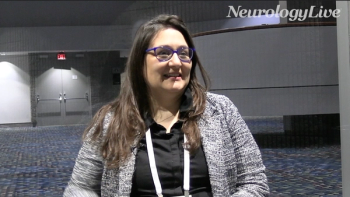
Key Diagnostic Pearls for NMOSD Recognition and Testing: Elena Grebenciucova, MD

The assistant professor of neurology at Northwestern University shared important clinical insights for early-career clinicians entering neuroimmunology, emphasizing best practices in recognizing, testing, and confirming NMOSD. [WATCH TIME: 3 minutes]
WATCH TIME: 3 minutes
“Accurate diagnosis in NMOSD begins with recognizing the clinical syndrome and testing correctly—serum, not [cerebrospinal fluid]; using a live cell–based assay at the right time can make all the difference.”
Neuromyelitis optica spectrum disorder (NMOSD) is a rare, relapsing, autoimmune disorder of the central nervous system primarily affecting the optic nerves and spinal cord. It is primarily characterized by severe episodes of optic neuritis and transverse myelitis, often resulting in vision loss, paralysis, or sensory deficits. NMOSD is estimated to affect 0.5 to 10 per 100,000 globally, with higher rates in women and in individuals of Asian, African, and Latin American descent.
Diagnosis of NMOSD hinges on recognizing its characteristic clinical attacks, confirming supportive MRI or serologic evidence, and ruling out mimicking disorders such as multiple sclerosis. Throughout this process, clinicians should maintain a high suspicion of optic neuritis—especially in bilateral cases—and always test for both aquaporin-4 and MOG antibodies, says neuroimmunologist
In the interview, Grebenciucova stressed that testing should be performed on serum, not cerebrospinal fluid, using live cell-based assays. She also stressed that timing is critical for NMOSD diagnosis and that clinicians should aim to test before immunotherapy initiation, as treatments like corticosteroids, plasma exchange, or rituximab can yield false-negative results—necessitating retesting several months later if suspicion remains.
Newsletter
Keep your finger on the pulse of neurology—subscribe to NeurologyLive for expert interviews, new data, and breakthrough treatment updates.































